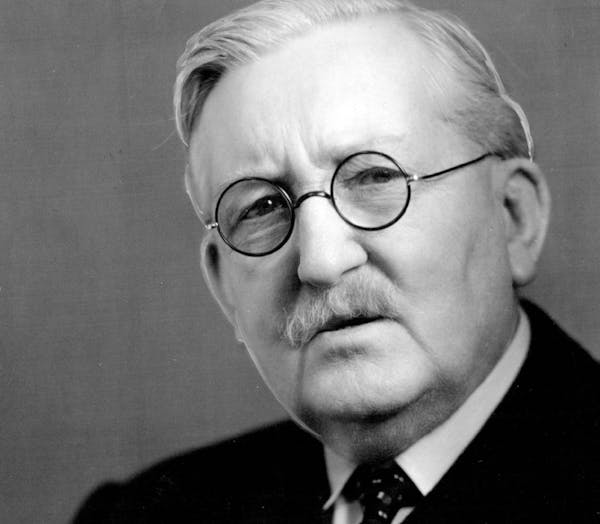Conservation projects in the metro area are poised to receive more Lessard-Sams grant money than ever before under this year's Outdoor Heritage Fund bill at the Legislature.
As crafted by a nonpartisan committee of eight citizens and four lawmakers, recommendations in the bill steer 18% of the overall funding package toward natural resource protection and enhancement projects in the Twin Cities. Also unprecedented is the sheer magnitude of the Legacy Amendment fund. Now at $159 million, the overall pot of dedicated sales tax receipts is 24% greater than the previous high of $128 million approved last year.
"Minnesota has an outstanding record of doing everything it can to help preserve our outdoor heritage,'' Rep. Rob Ecklund, D-International Falls, said earlier this month as he championed the Lessard-Sams bill in a key House committee. "This is a good bill for protecting and preserving our environment.''
In the city of Rogers, approval of the bill would deliver $1 million for the purchase and preservation of Stieg Woods, a rare 20-acre tract of old-growth, hardwood forest that would otherwise be lost to development. In St. Paul, portions of Phalen Creek would be "daylighted'' by the excavation of old, underground channels. Various other projects would permanently expand or enhance wildlife corridors along the Mississippi, St. Croix and Minnesota rivers. In all, Twin Cities projects could receive upward of $27 million.
To close observers of the annual Lessard-Sams project list, the split of money is noteworthy because of past tug-of-wars between urban interests and the dominant outdoors constituencies of outstate Minnesota. The dedicated fund derives most of its cash from the Twin Cities economy based on a fractional sales tax approved by voters in 2008. But most high priorities for game, fish and wildlife habitats rest Up North, in the prairie regions, transition areas and Minnesota's southeastern Driftless Area.
Scott Rall, a former member of the Lessard-Sams Outdoor Heritage Council, said urban-rural tensions over the bill have softened substantially since the first Lessard-Sams appropriation was approved by the Legislature in 2009. Back then, metro area legislators had to be reminded that politics of geography had nothing to do with where the dollars would be spent.
"I don't perceive the metro versus outstate thing to be an ongoing debate, but it certainly will be an undercurrent in that bill forever,'' said Rall, who worked on the council for six years.
He said the ultimate guideline for him in evaluating applications was whether the proposed project would result in greater populations of game, fish and wildlife.
"Geography should not be the driver,'' he said. "The driver is game, fish and wildlife.''
But to this day, Lessard-Sams administrators still categorize spending according to five ecological sections. The "Metropolitan Urbanizing Area'' has received as little as 2.9% of the annual distribution. The previous high was 17.3%, received in 2010.
Rall said the council has made adjustments over the years to assure that metro interests get "a bite of the apple'' even when mainstream project proposals for the urban area are in short supply. The Conservation Partners Legacy (CPL) small grant program sets aside a chunk of Lessard-Sams funds every year for distribution by the Department of Natural Resources in the metro area and in cities like St. Cloud, Rochester and Duluth.
This year's CPL portion of the Lessard-Sams bill would provide at least $2.5 million for smaller conservation projects in the seven-county area. Those grants will range in size up to $500,000.
Joe Pavelko, assistant director of the Lessard-Sams Outdoor Heritage Council, said council members are not bound by any geographic requirements when it comes to ranking high-priority project applications. For 2022, the council chose 42 projects to recommend to the Legislature. The selection process started with more than $314 million in requests.
"It has to do with council members' priorities,'' Pavelko said.
Because of projected growth in the overall state budget, the Lessard-Sams bill could grow in size as it makes its way through the Legislature. Pavelko said any added dollars would likely be spread evenly across all 42 projects.
For the metro area, the Stieg Woods project in Rogers has unique appeal. The remnant "big woods'' forest of sugar maples, basswood trees, oaks and bitternut hickory trees is now part of a farm owned by Denny and Jan Stieg, whose family has lived on the property for more than 100 years. The woodlot has very little invasive species and provides the city with a bookend to Henry's Woods, a 45-acre old-growth forest permanently preserved north of I-94.
"I'm just amazed every time I walk in those woods,'' said Michael Bauer, parks and recreation director.
He said the Stieg parcel will be walkable and open to wild plant foragers and other outdoors enthusiasts. He foresees special hunts in the woods and educational opportunities.
The largest metro projects covered by the bill are in Dakota County, Washington County and elsewhere along the Mississippi, St. Croix and Minnesota rivers.

